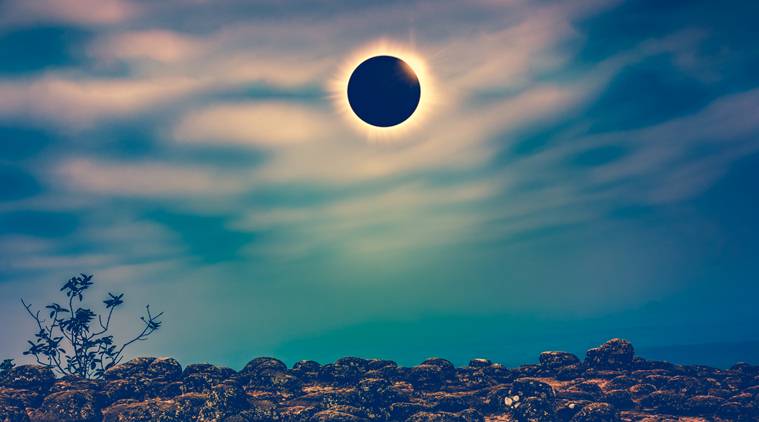
Surya Grahan or Solar Eclipse 2019 Date, Timings: In a total solar eclipse, the Moon moves between the earth and the Sun. When this happens, part of the Sun’s light is blocked. The sky slowly gets dark as the Moon moves in front of the Sun. When the Moon and Sun are in a perfect line, it is called a total eclipse. These are called rare because most people only see one in their lifetime.
During a solar eclipse, the Moon actually casts two shadows towards Earth. One shadow is called the umbra which becomes smaller as it reaches the Earth and the second shadow is called the penumbra which becomes larger as it reaches the Earth.
A total solar eclipse, or a complete blocking out of the Sun’s light, can only be seen from the area on the Earth’s surface that enters the Moon’s umbra, the smaller shadow. People viewing the eclipse from the area of the Earth’s surface that enters the penumbra, the larger shadow, will see only a partial blocking of the Sun.
A total solar eclipse occurs when the Moon is between the Sun and the Earth so that the visible disk of the Sun is covered by the Moon. This simply means that a total solar eclipse occurs when the Sun, Moon and Earth are in a straight line in such a way that the Moon blocks the Sun’s rays from reaching the Earth.
While in partial and annular eclipses, only part of the Sun is obscured, in a total eclipse, the disk of the Sun is fully obscured by the Moon.
A total solar eclipse is a spectacular natural phenomenon and many people consider travel to remote locations in order to observe one.
However, viewing the Sun during partial and annular eclipses (and during total eclipses outside the brief period of totality) requires special eye protection, or indirect viewing methods.
A total solar eclipse can only occur when two events happen at the same time. The first event is a new Moon. This phase of the Moon occurs when the Sun is almost directly behind the Moon, and we see only a sliver of the Sun’s light reflected by the Moon. During this time the Moon and the Sun appear close together. The second event that must occur is that the Moon must be in the right position, directly in the line of sight between the Earth and the Sun. These two events occur at the same time about once every year and a half.
This year, Surya Grahan will be visible on July 2, which is expected to last for around four minutes and 33 seconds. According to a Bloomberg report, the solar eclipse will begin off the coast of New Zealand with Chile and Argentina directly in the path of totality.
Although this solar eclipse will not be visible from India, according to a Space.com report, most of the eclipse will be happening over the Pacific, with the partial eclipse starting at 12:55pm EDT (10:25pm Indian Standard Time).
In case if you happen to miss out this solar eclipse, then the next one is likely to happen in December 2020.